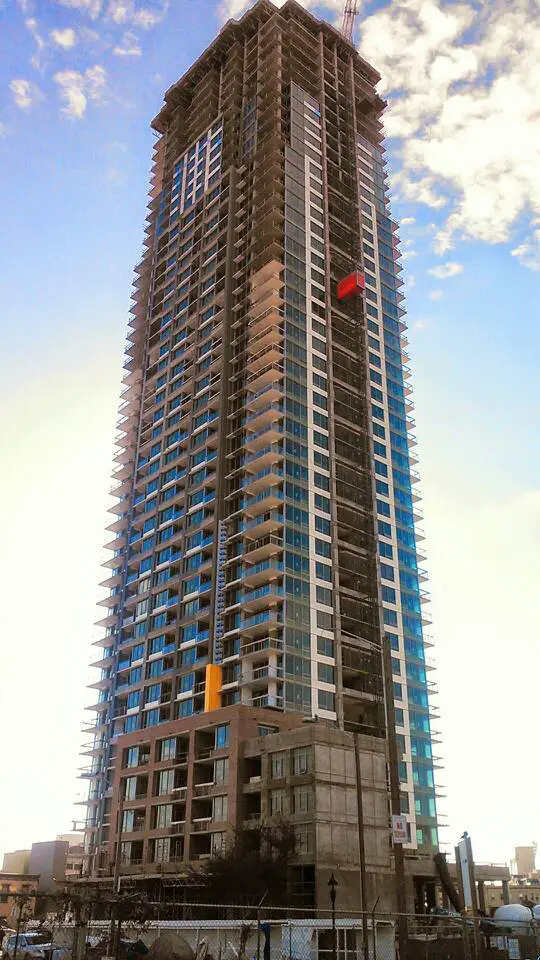Living in high-rise towers is one of the most luxurious dreams of many people, especially young couples.
Although many families still prefer detached houses to apartments or condominiums, living in towers is becoming a trendy demand.
But the question is whether or not you know the requirements of a high-rise building compared with a normal one.
One of these requirements is the plumbing system which might be significantly different in high-rise towers and normal buildings.
In this article, we’re going to present some great tips in this regard to help both designers and condo owners to improve their plumbing systems.
Consider the decline in water flow pressure
In high-rise buildings, low water pressure is common, especially on the upper floors and in penthouses.
Water is drawn from the city’s municipal water supply and passes through several elbows and valves, each of which lessens the pressure. Pumps should be used to improve the water pressure.
In order to help enhance water pressure using gravity, these systems might include a network of small-size pipes, pumps, and even water tanks on the building’s roof.
As a result, water pressure is strong on the lower floors, but it decreases as the water goes up the building via the risers.
This can lead to extremely low water pressure in the upper units, particularly during periods of high demand. If you have a number of leaks, having your water pressure checked and your system repaired or restored will help you recover water pressure.
Regularly check drain pipes for clogs
Drain clogs can result in delayed drainage in individual units and, in the worst-case situation, sewage backup.
Clogs are most commonly caused by grease, foreign objects like toys, and paper products other than toilet paper. Items that should not be thrown away into drains include fish, cat litter, pet waste, papers, wet wipes, feminine products, facial tissue, grease, oil, meat trimmings, and fruit and vegetable rinds.
To inform your tenants on the best plumbing pipe practices in order to reduce the frequency of drain and sewage line blockages, you may provide a booklet or post information on your building’s website.
Do not put off repairing leaks
Leaks are common in older plumbing systems, especially those established 20 years or more ago.
The cause is corrosion, rust, and leaks between pipes and couplings or valves. A yearly plumbing pipe inspection that detects leaks is recommended to detect leaks at early stages before they increase your water waste and result in low water pressure at higher levels.
Alternatively, there are new technologies on the market that can detect and alert you of leaks in plumbing pipes and appliances.
Get rid of traditional appliances that use a lot of water
Another common problem is that older appliances and water fixtures use significantly more water than their modern counterparts.
Low-flow faucets and showerheads should be used in place of outmoded faucets and showerheads. To ensure you’re choosing a high-quality and cost-effective appliance, visit a competent team like R & Z Plumbing.
Another alternative for bathroom sinks is to install water faucets with sensors that only turn on the water when a hand is detected.
Installing low-flow toilets and energy-efficient appliances such as washing machines and dishwashers, which use significantly less water than units produced even five years ago, is another option.
Consider using standard safety valves in your design
You’ll want to double-check that all of your water safety valves are in good working order and aren’t blocked or frozen by corrosion or silt, as well as sensors and technologies that detect water leaks and immediately cut off water from the leaking area.
High-rise buildings should include water cutoff valves for any external water features, such as fountains and sprinkler systems, as well as shut down valves for every appliance and even shutoff valves for each floor.
In an emergency, these valves may be turned to the closed position to shut off the water to select areas and prevent serious water damage. Of course, if you faced an emergency issue, try to call a professional plumbing company like R & Z Plumbing to help you immediately.
Make a schedule for routine maintenance
High-rise buildings may want to implement a plumbing maintenance plan that involves drain cleaning and testing on a regular basis to discover small leaks before they cause catastrophic water damage and stratospheric repair costs.
Many professional plumbers recommend cleaning your drain pipes and having your water pressure tested at least once a year.
Install a flow meter for each condo unit separately
If you reside in an older building, you might not have a separate water meter for each unit. This makes it difficult to accurately estimate each unit’s water usage, perhaps leading to high water bills for units that aren’t using much.
This is because water usage in non-submetered high-rise buildings is typically allocated evenly depending on the number of units and people in each unit.
Rather than guessing, install water meters in each unit so that everyone is properly billed for their water usage.
The discovery of leaks may be aided if one or more units see considerable increases in their water expenditures.
Final thoughts
Plumbing is a critical part of each building, especially high-rise towers. You’re faced with lots of units and owners, and therefore, you have to consider many aspects like separation and cost. Try to do several reviews and double-check the plan to minimize any problem in the implementation procedure.


